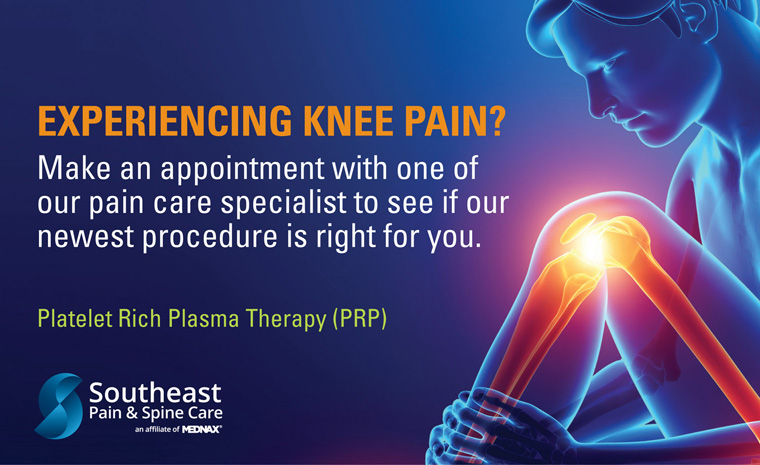Platelet Rich Plasma Therapy (PRP)
What is Platelet-Rich Plasma?
Platelet-Rich Plasma (PRP) is taken from a person’s blood and delivered into an injured bone or soft tissue area. The body has the capacity to heal itself. When the body becomes injured, a natural healing process occurs to repair the damaged tissue. The body signals platelets and other components in our blood supply to migrate to the injury site. The platelets contain growth factors, which stimulate the normal wound-healing process and decrease pain.
New medical advances have been developed to concentrate these platelets to be precisely introduced to the injury site in an injectable form. The implantation of these platelets from a small amount of the patient’s own blood has the potential to “supercharge” the body’s capacity for healing. For this reason, PRP treatment is becoming a more popular option for non-healing or chronic injuries.
Is PRP indicated for me?
Despite traditional treatment options, PRP therapy is indicated for injuries that have failed to heal. It can be performed to treat both chronic and acute musculoskeletal injuries involving tendons, ligaments, and muscles all over the body. Examples of diagnoses treated include resistant fractures, muscle strains, ligament sprains, articular cartilage injury, arthritis, acute tendon rupture, and chronic tendinopathy. The procedure is less aggressive and less expensive than surgery. It can heal tissue with minimal or no scarring and alleviates further degeneration of the tissues. Ask your doctor if PRP is right for you.
How is Platelet-Rich Plasma made?
PRP can be done in the office during one visit. A sample of blood, usually around 60ml or 2 ounces, is drawn and the blood is put into a centrifuge, a tool separating the blood into many parts. The portion of concentrated platelets is then taken and injected into the injury site after the doctor applies a local anesthetic to the injection site(s). The entire PRP therapy takes about 30 minutes.
How many treatments are necessary and what do I expect?
While responses to treatment vary, most patients achieve successful outcomes with only one injection. In some cases, a series of up to three injections are required to achieve significant results. Each injection is spaced several weeks to a few months apart. The risks and side effects do not change with the number of injections. About one in 10 patients may experience significant post-treatment pain that lasts for a few days and is thought to be due to a combination of factors such as the release of scar tissue, bone spurs, and a vigorous inflammatory response due to the PRP. Most patients will experience mild-moderate pain that can be managed with Tylenol, non-narcotic pain medicine, topical pain cream, and narcotic analgesics when needed. It is expected that it will take up to 6-8 weeks to adequately assess your response to the therapy.
Will my insurance pay for this treatment?
Carolinas Healthcare System (CHS) and Southeast Pain and Spine Care (SEPSC) offer this procedure as a “cash-pay” only option. Since this is a fairly new procedure, most insurance companies have not added it to their approved procedure list so will not cover it. Therefore, your insurance company will not be billed. The cost is to be paid at the time the procedure is done.
What are the potential benefits of PRP?
PRP stimulates the healing of the injured tissue by activating your body’s natural healing ability and can reduce healing times by up to 50%. Patients on average report more than 50% improvement in 6 weeks and up to 100% improvement in 12 weeks. This may eliminate the need for more aggressive and expensive treatment options such as long-term medication or surgery.

For additional information on PRP Therapy, please call 866-228-1108 to request an appointment with one of our Southeast Pain and Spine Care pain management providers or click to Request an Appointment.


